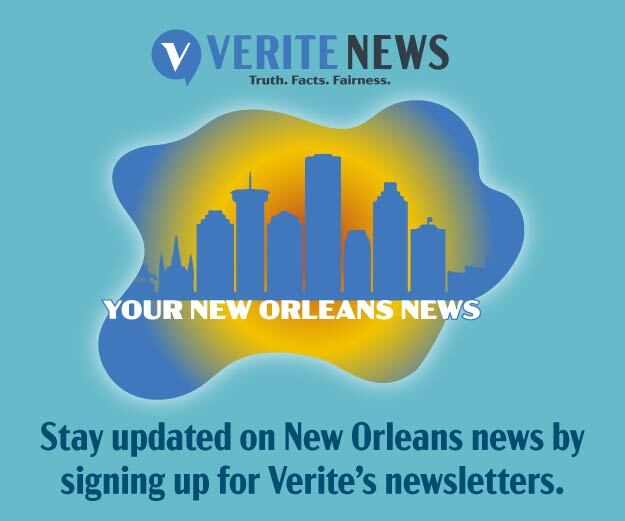Ben Collongues, 35, grew up on the West Bank and has lived through several tropical storms and hurricanes that have passed through New Orleans. And whether they’ve waited out storms or evacuated from the city, they have always done it with their mother, with whom they feel safe as a transmasculine person.
So in 2021, when Hurricane Ida was about to hit the city, they went to their mother’s house to wait out the storm. But one thing they didn’t account for was that their uncle, who refuses to use their chosen name and preferred pronouns, was also going to wait out the storm at their mother’s house.
“While I didn’t feel threatened by him, I was very uneasy having to be in a space where I could not really escape his presence aside from going into another room,” Collongues said. After the storm passed, leaving an extended, citywide blackout in its wake, their uncle returned to his house, where he had a generator. Collongues opted not to join him.
“Obviously we can’t control the storm,” they said, “but something else for me to consider is my own mental health. A storm is already a very stressful situation. What other things can I maybe remove that would also cause stress?”
Situations like the one Collongues experienced during Ida are common for queer and transgender people trying to survive hurricanes and storms. The Federal Emergency Management Agency said in its 2020 National Preparedness Report that being queer or transgender increases vulnerability to disasters. That’s because, like people of color, the elderly or people in poverty, they likely have additional needs the general population don’t have that may or may not be getting met before, during or after a storm.
“We have noticed that folks’ experiences of hurricane season vary extensively across different populations – and subsequently, so do their needs,” said Chenier “Klie” Kliebert, executive director of Imagine Water Works, a climate justice group based in New Orleans that is led by transgender and queer people.

And Kliebert said that because New Orleans is a refuge for LGBTQIA+ people throughout the South, there are a lot of people in that community who are new to the city and haven’t experienced a storm or hurricane.
That’s what led to the creation of the “Queer/Trans Guide to Hurricane Season” in 2017, a guide to helping queer and transgender people prepare and plan for tropical storms and hurricanes. Over the last six years, Imagine Water Works has put out a yearly guide. Past editions used information from government hurricane guides, but went further to make it appealing and helpful to queer and transgender readers.
They also include tips and information that can’t be found in guides made for the general population, like a packing list that includes items to help maintain gender presentation like clippers, tweezers, extra wigs or binders, essential documents like receipts for sexual reassignment surgery and proof of name change and medicine for hormone replacement therapy. And there’s guidance on choosing who to evacuate with in order to maintain safety as a queer or transgender person.
The group plans to release an updated version of the guide this month, during the height of the hurricane season.
Past versions of the guide include popular memes of the time, colorful fonts and images with the transgender flag. It also includes anecdotes from queer and transgender New Orleanians sharing their experiences of surviving storms.
“It’s almost like it’s been translated into our language,” Kliebert said. “When something is in your language, you’re gonna be much more likely to read it, [and] also, feel safe reading it.”
To take the cultural competency one step further, Imagine Water Works for the first time released a zine featuring art, poems, information and interviews to go along with this year’s edition of the guide. Kliebert said that putting the information into the zine format will help it reach more queer and transgender people in the region. Collongues, a photographer in the region, had one of their photographs taken in the aftermath of Hurricane Ida featured in the zine.
The climate justice group had a release party for the zine last Friday (Aug. 18).
This year’s guide is twice the size of previous editions. It includes a more extensive section on making evacuation decisions, information about protecting artwork, heirloom seeds and regalia for indigenous people and an expanded additional resources section that includes mental health support, humor and resources for Spanish-speaking people.
“Ultimately, we do this for community,” Kliebert said. “Thousands of folks have read it over the years and and people pass it around. And they look for it every year, so we just keep doing it.”
Kliebert said this year’s edition of the guide and the first edition of the zine will be available online by the end of August.



